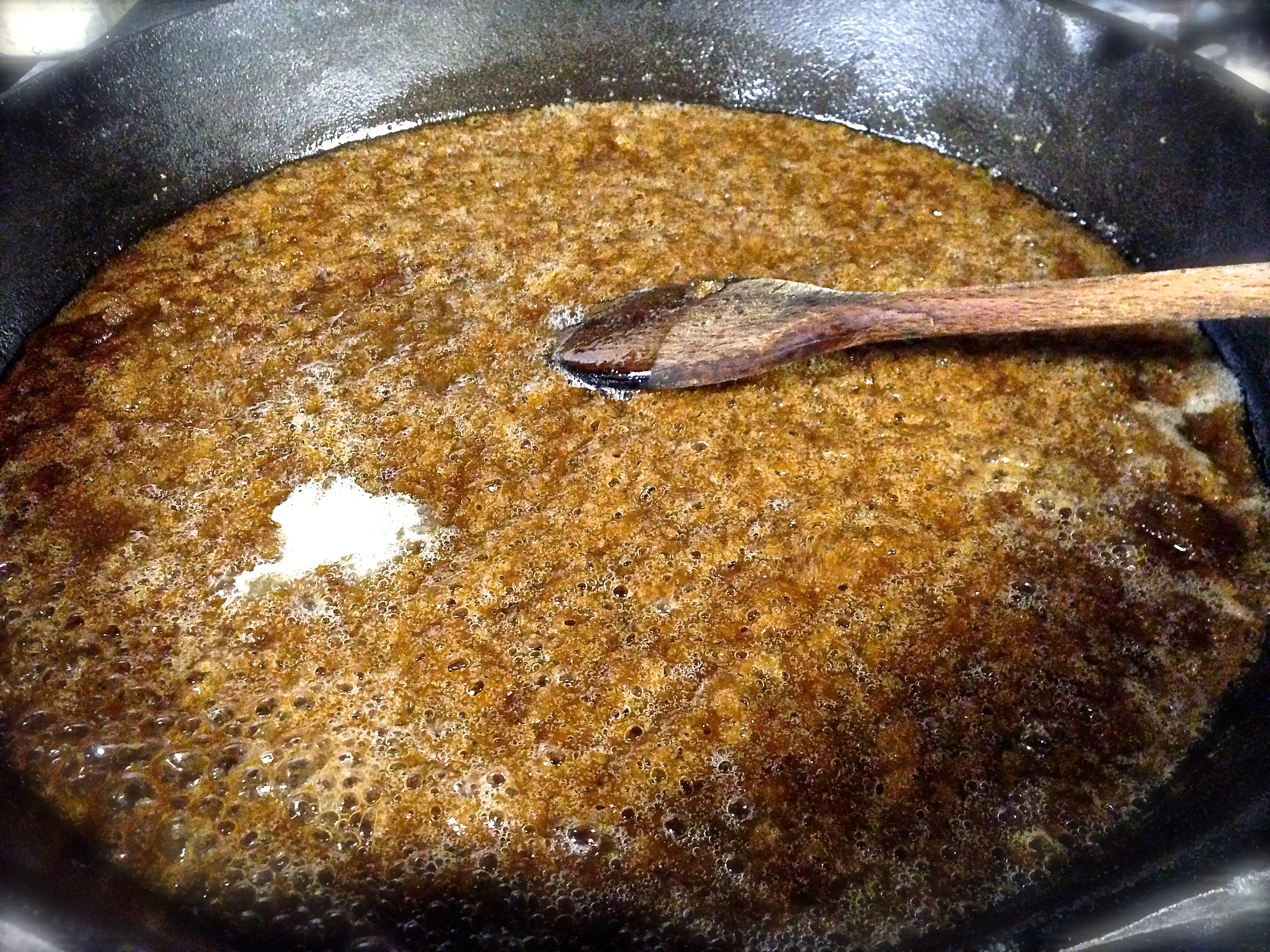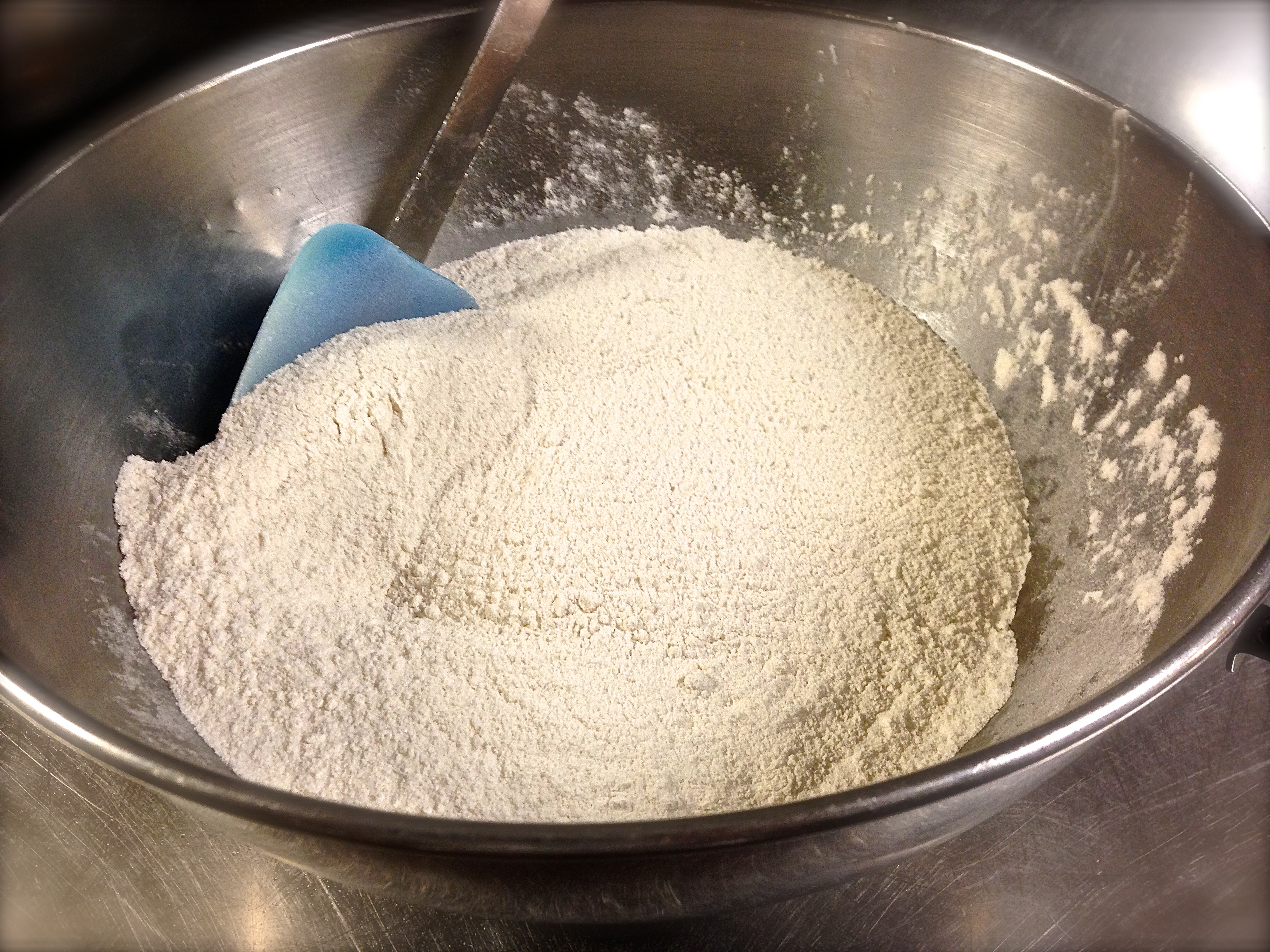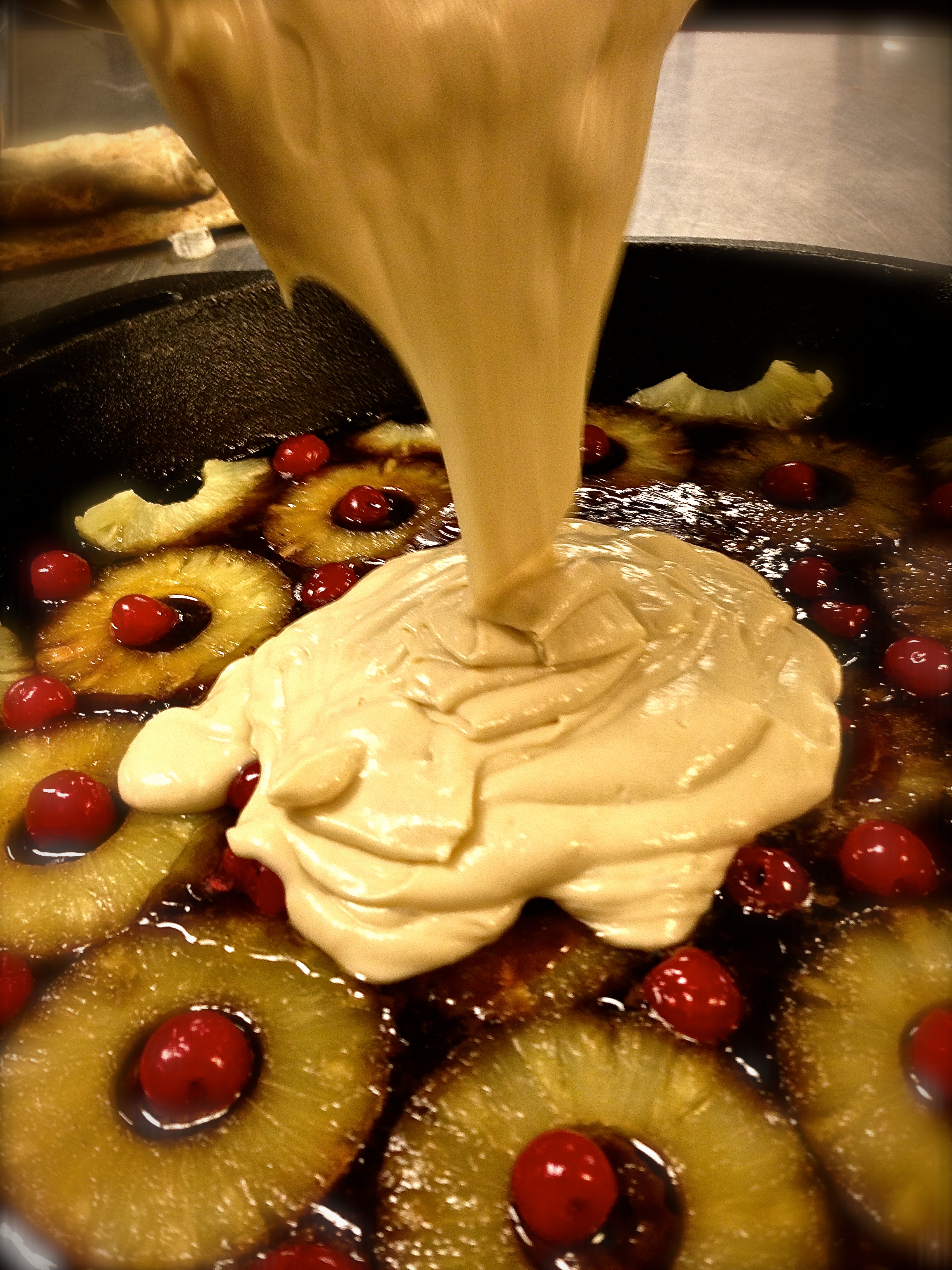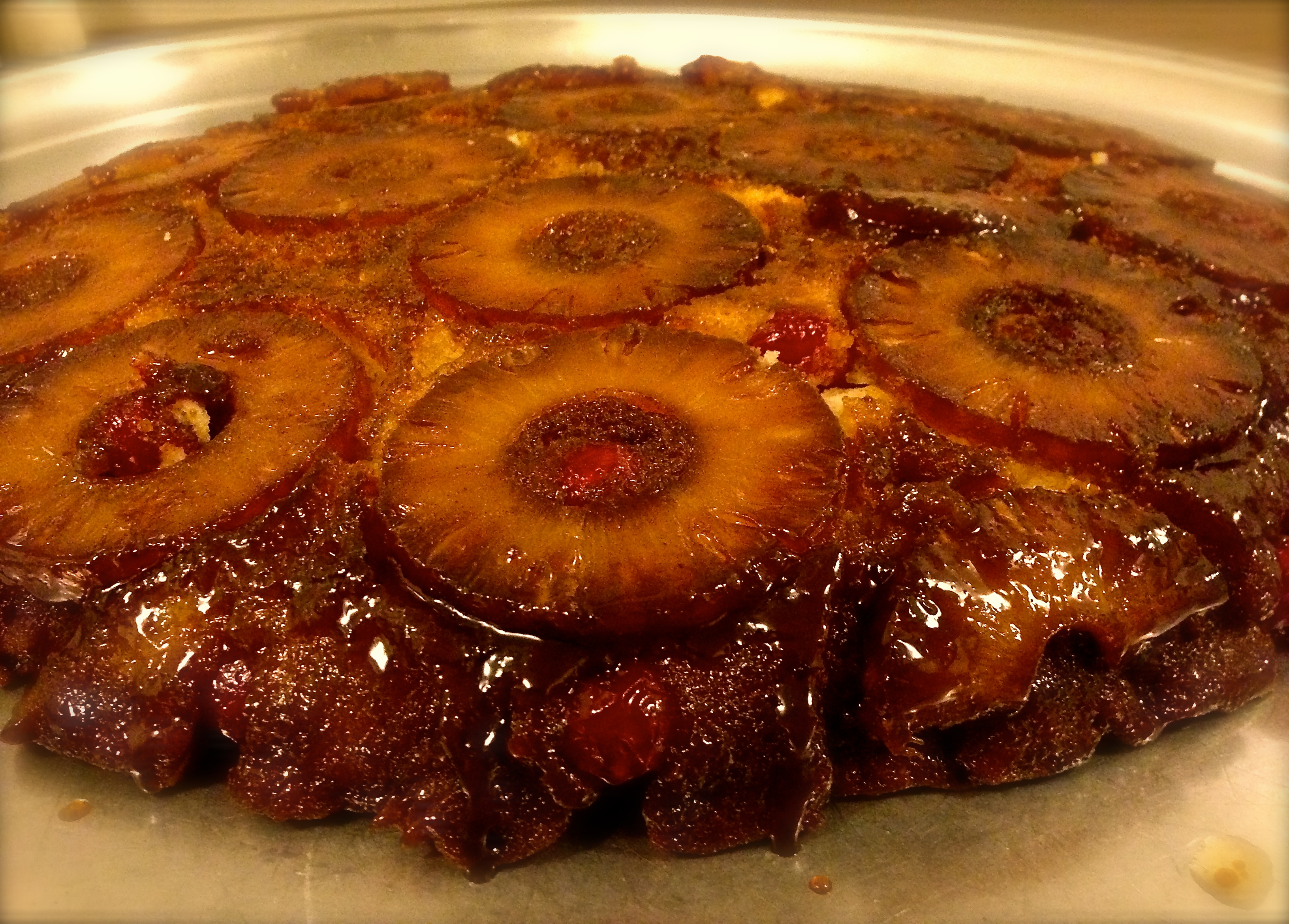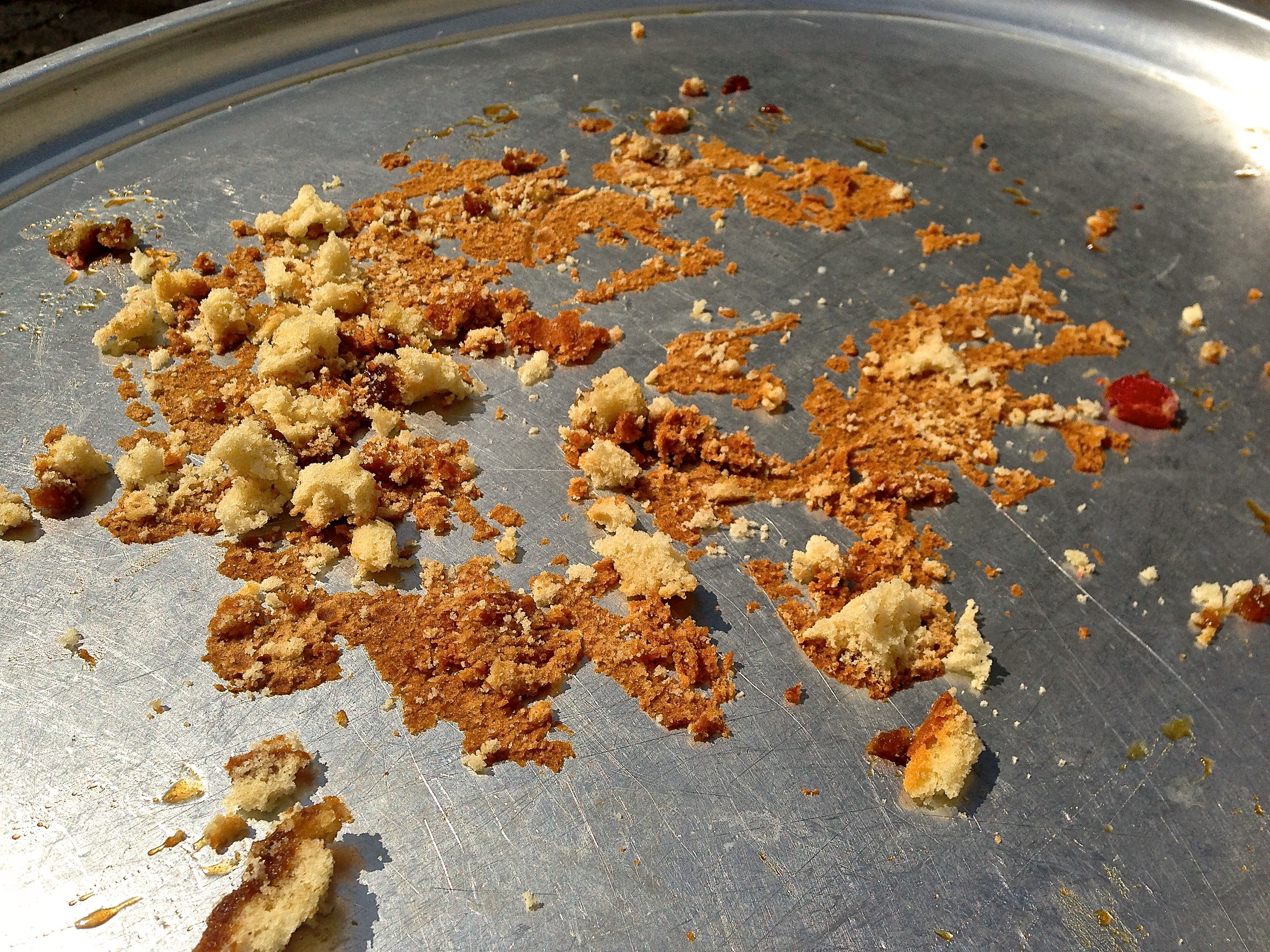Or what woman, having ten silver coins, if she loses one coin, does not light a lamp and sweep the house and seek diligently until she finds it? And when she has found it, she calls together her friends and neighbors, saying, ‘Rejoice with me, for I have found the coin which I had lost.’ Just so, I tell you, there is joy before the angels of God over one sinner who repents. -Lk 15: 8-10
If you were one of the friends or neighbors invited to this party, what would you bring?
I’d recommend the following upside-down cake. Easy to bake and wonderfully delicious, it honors this diligent woman, who, as the fourteenth-century Dominican mystic John Tauler put it, practically turned her house upside-down looking for her lost coin. The flipping motion required to complete this cake harkens to a still more bracing reversal: the “right-side-upping” of repentance. How else could the lost soul, represented by the lost coin in Jesus’ parable, be found except by means of that soul’s conversion? And the flip is no flop. There is cause for rejoicing here—hence the cake. Here’s the recipe:
Lost Coin Cake
serves: 8
prep time: 30 mins
cooking time: 40 mins
[box]
Topping
- ½ stick unsalted butter
- 1 ⅓ cups light brown sugar (packed tightly, but not flowing over)
- sliced pineapple (8-10 canned slices or use fresh)
- 15-20 maraschino cherries (optional)
Cake
- 3 cups all-purpose flour
- 1 ½ tablespoon baking powder
- 1 ½ teaspoon salt
- 2 ¼ cups granulated sugar
- ¾ stick unsalted butter, melted
- 3 large eggs, room temperature
- 1 ¾ cups whole milk
- 2 teaspoons vanilla extract
[/box]
Directions:
1. Preheat oven to 350℉.
In the spirit of the woman’s search, you are welcome to leave the oven light lit.
2. To prepare the topping, place a 12-inch cast iron skillet over medium heat. Melt the butter, swirling to thoroughly coat the skillet. Stir in the brown sugar until it is melted and starts bubbling.
Watch out: this combo will smell good. Sinfully good. But resist! These indulgent ingredients are certainly alluring, like the apparent (but false) good that sin promises. If they’re consumed on their own, however, they cannot offer anything of real substance. They’re just empty calories.
3. Arrange the pineapple slices in the skillet, and add the maraschino cherries to fill in some of the empty spaces among them. Remove the skillet from the stovetop and set aside.
Why these fruits? Why not pomegranates, with which the hem of the high priest’s robes were decorated (Ex 28:33-34)? Because the pineapple and maraschino cherries are for more than show—they hem the dessert about in sweetness, enticing us to taste the goodness of the Lord (cf. Ps. 34:9). Why not the melons the Israelites pined for in the wilderness, lost as they were (Num 11:5)? Pineapple is more fitting because it’s a symbol of homecoming and hospitality, exactly the kind celebrated in this parable and in reality whenever a sincere return to the Lord is made.
Nevertheless, after setting the skillet aside, don’t forget where you put it.
4. In a mixing bowl, sift together the flour, sugar, salt, and baking powder.
The first three contribute to the cake’s substance, sweetness, and savor, respectively, while the baking powder leavens an otherwise weighty situation. But whatever you do, steer clear of Pharisee Brand™ Baking Powder (cf. Mt 16:6).
5. Mix in the butter (be careful, as all fat belongs to the Lord [Lev 3:16]), eggs, milk, and vanilla until no lumps remain.
The batter will end up thick and rich, like the Father’s mercy, but that doesn’t excuse you from working out your recipe with fear and trembling (Phil 2:12). Therefore, combine these wet ingredients slowly.
6. Pour the batter evenly over the pineapple slices and gently spread to even out the top.
Sorry, Luther. This step is nothing like covering a dung heap with snow, as if God were simply content to cover sin without healing its effects in us. Rather, the astute baker will ensure the batter flows into all sorts of little nooks and crannies among the pineapple slices, just as God suffuses the soul of a man with His grace (cf. CCC 2001-02).
7. Bake the cake for 30 to 40 minutes, or until a toothpick inserted into the center comes out clean. Remove from the oven and let cool for approx. 15 minutes.
Place a platter or serving dish over the skillet. In one swift move, turn the cake onto the platter.
The cake hits the dish the way St. Paul hit the ground, overcome by the magnificent presence of the Lord. The thud is a new beginning, a total reorientation (cf. CCC 1431). The New Testament frequently describes repentance in terms of a turn: the “about-face” away from sin and toward God (in the Greek, metanoia). It’s also an overturning, wherein we’re flipped upside-down and only then truly realize that we had been standing on our heads all along. Found by God, we find our way anew.
8. Slice and serve warm, accompanied by vanilla ice cream on the side.
Be sure to cut generous slices, as the measure with which you measure will be measured out to you.
✠
Image: It’s a piece of cake


